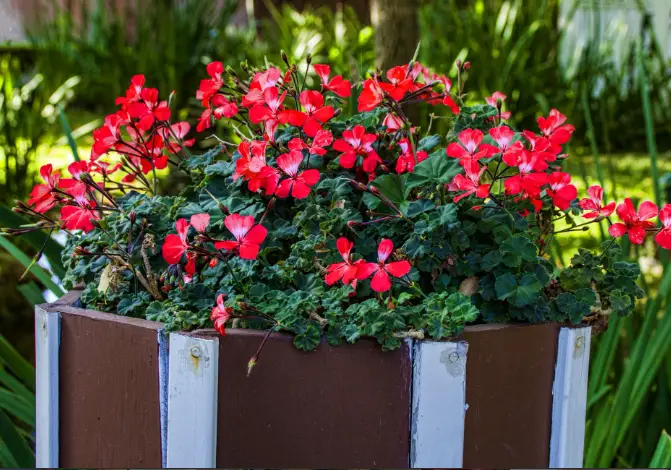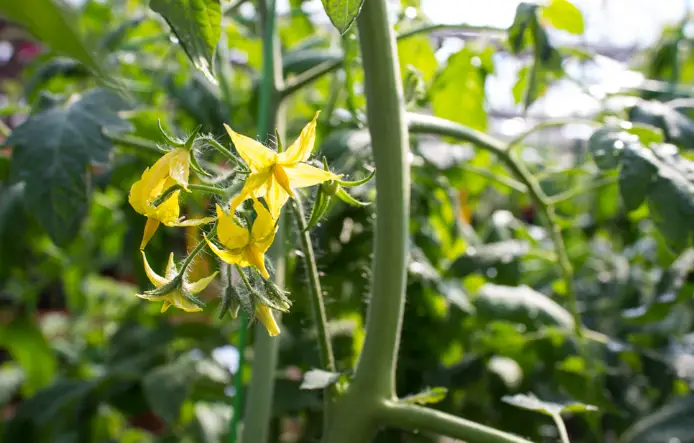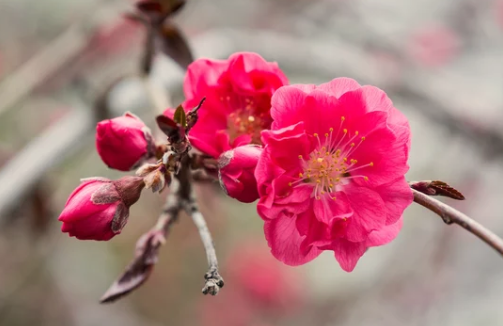In Full Bloom: The Best Red Potted Flowers for Your Garden
Red potted flowers. These fiery blooms add a touch of passion and drama to any garden, balcony, or indoor space. Whether you’re a seasoned gardener or a budding plant enthusiast, there’s a red flower for every corner of your life. Let’s explore some delightful options:

-
Alstroemeria:
- Commonly used by florists due to their large blooms and dye-friendly nature.
- Perfect for both gardens and cut flower arrangements.
- They are easy to grow, and they bloom all season long.
- Plant in full sun or partial shade with well-drained soil.
- Suitable for zones 8–10.
-
Amaryllis:
- Known for their trumpet-shaped blooms, they are available in red and white.
- Pair beautifully with tulips and other bright flowers.
- Thrive in full sun and well-drained soil.
- Ideal for zones 9–11.
-
Anemone (Windflower):
- Poppy-like blooms in early-to-mid spring.
- Plant in full sun or part shade.
- Requires moist, well-drained soil.
- Flourishes in zones 3–9.
-
Chrysanthemum (Mums):
- Diverse range from dime-sized pom-poms to daisy-like blooms.
- Grow as annuals in cold climates.
- Full sun and well-drained soil are essential.
- Suited for zones 3–9.
-
Marigold:
- Distinct peppery scent that deters insect pests.
- Plant in full sun with well-drained soil.
- Flourishes in zones 9–11.
-
Zinnia:
- Seeds burst into an array of shapes and colors, including green!
- Rapid growth—blooms in just weeks.
- Full sun and well-drained soil.
- Adaptable to zones 3–10.
-
Oriental Poppy:
- Showy red flowers in late spring or summer.
- Symbolic in England, representing lives lost in WWI.
- Requires well-drained soil.
- Flourishes in zones 2–8.
-
Red Roses:
- With over 2,000 types, there’s a rose for every garden.
- Sun-loving and appreciates moist, well-drained soil.
- Explore the meaning of red roses in our other article.
-
Lilies:
- Low-maintenance beauties are often found along ditches and fields.
- Large blooms make them popular for springtime arrangements.
- Grow in full sun or partial shade.
- Flourish in zones 4–8.
-
Calla Lily:
- Known for their single-petal blooms.
- Common cut flowers around Easter.
- Suitable for indoor or outdoor cultivation.
- Plant in full sun or partial shade with well-drained soil.
- Grows in zones 8–10.
-
Red Tulip:
- Spring-blooming tulips make a stunning statement.
- Plant when most other plants are dormant.
- Requires moist, well-drained soil.
-
Geraniums:
- These classic blooms come in various shades of red.
- Ideal for containers, hanging baskets, or garden beds.
- Thrive in full sun and well-drained soil.
- Suitable for zones 9–11.
-
Begonias:
- Known for their lush foliage and vibrant flowers.
- Perfect for shady spots or partial sun.
- Available in various red hues.
- Flourish in zones 9–11.
-
Petunias:
- Abundant trumpet-shaped flowers in red tones.
- Great for hanging baskets, window boxes, or garden borders.
- Plant in full sun.
- Suitable for zones 9–11.
-
Salvia:
- Tall spikes of red flowers attract hummingbirds.
- Plant in well-drained soil.
- Flourishes in zones 4–9.
-
Bougainvillea:
- Stunning red bracts surround tiny white flowers.
- Requires full sun and well-drained soil.
- Ideal for warm climates (zones 9–11).
-
Canna Lily:
- Bold red blooms atop tall stems.
- Plant in full sun or partial shade.
- Flourishes in zones 7–11.
-
Red Gerbera Daisies:
- Cheerful and daisy-like, they make excellent cut flowers.
- Grow in the full sun.
- Suitable for zones 9–11.
How to Care for My Red Potted Flower?
Tips for red-potted flowers to keep them thriving and blooming:
-
Choose the Right Pot and Soil:
- Select a well-draining pot with drainage holes to prevent waterlogging.
- Use a high-quality potting mix suitable for the specific flower type.
-
Light:
- Most red-potted flowers thrive in bright, indirect sunlight.
-
Avoid placing them in harsh, direct sunlight, especially during the hottest part of the day.
-
Watering:
- Water your red-potted flower when the top inch of soil feels dry.
- Ensure thorough watering, allowing excess water to drain out.
- Avoid overwatering, as it can lead to root rot.
-
Humidity:
- Some red flowers, like anthuriums, appreciate higher humidity levels.
- Place a tray of water near the plant or mist the leaves occasionally.
-
Temperature:
- Maintain a comfortable room temperature (around 65°F to 75°F, or 18°C to 24°C).
- Avoid sudden temperature fluctuations.
-
Fertilizing:
- Use a balanced liquid fertilizer during the growing season (spring to late summer).
- Follow the recommended dosage on the fertilizer label.
-
Pruning:
- Regularly remove dead or yellowing leaves and spent flowers.
- Pruning encourages new growth and better flowering.
-
Pest Control:
- Keep an eye out for pests like aphids, mealybugs, or spider mites.
- Treat any infestations promptly, using appropriate methods.
-
Repotting:
- Repot your red potted flower every 1-2 years to refresh the soil and provide more space.
- Choose a slightly larger pot than the current one.
-
Specific Care for Anthuriums:
- Anthuriums (also known as flamingo flowers) have heart-shaped, long-lasting blooms.
- Keep them in bright, indirect light.
- Water when the top inch of soil is dry.
- Maintain higher humidity levels.
- Avoid direct sunlight.
- Fertilize during the growing season.
- Prune dead leaves and faded flowers.
How do I repot a red-potted flower?
Repotting your red-potted flower is essential for its health and growth. Follow these steps to ensure a successful transition:
-
Choose the Right Pot and Soil:
- Select a pot that’s just as deep and twice as wide as the current pot.
- Use organic potting soil suitable for your flower type.
-
Prepare the new pot:
- Partially fill the new pot with potting mix.
- Place the plant into the pot, ensuring it’s centered and upright.
- Position the plant 2-3 cm below the top of the pot.
-
Backfill with soil:
- Fill around the root ball with more potting mix.
- Water gently while filling to avoid air spaces around the roots.
- Firmen the soil to provide stability.
-
Watering:
- Water the plant thoroughly after repotting.
- Ensure the water reaches the base of the plant.
Recommend fertilizer for These Plants
When it comes to keeping your red potted flowers healthy and vibrant, choosing the right fertilizer is crucial. Here are some excellent options to consider:
- Miracle-Gro Water Soluble Flower Food:
- A powdered formula with a balanced 15-30-15 N-P-K ratio.
- Promotes strong flower growth and can be used for both annuals and perennials.
- Mix it into your watering can and apply every one to two weeks.
- Dr. Earth Root Zone Starter Fertilizer:
- Ideal for giving seedlings a boost when planting.
- The NPK ratio of 2-4-2 supports strong root development.
- Suitable for flowers, vegetables, potted plants, trees, and shrubs.
- Jobe’s Organics Rose & Flower Fertilizer:
- Granular formula is specifically designed for roses and flowering plants.
- Organic and enriched with beneficial microbes.
- Provides essential nutrients for blooms and overall plant health.
- Osmocote Smart-Release Plant Food:
- Slow-release granules that release nutrients gradually over time.
- Suitable for various potted plants, including flowers.
- Easy to apply and provides consistent feeding.
- Neptune’s Harvest Fish Fertilizer 2-4-1:
- Liquid fertilizer is derived from fish emulsion.
- Rich in organic matter and essential nutrients.
- Use it as a foliar spray or mix it with water for regular feeding.
Recommend Potting Mix For These Plants
When it comes to keeping your red-potted flowers healthy and vibrant, choosing the right potting mix is crucial. Let’s explore some excellent options:
- Seasol Advanced Potting Mix:
- A premium (red tick) potting mix that meets the Australian Standard for Premium Potting Mix.
- Provides a balanced combination of air, moisture, and nutrients.
- Ideal for strong and healthy potted plants.
- Miracle-Gro Indoor Potting Mix:
- Specifically formulated for indoor plants.
- Contains essential nutrients and promotes healthy growth.
- Great for red potted flowers kept indoors.
- Miracle-Gro Cactus and Palm Potting Mix:
- Designed for succulents and cacti.
- Ensures proper drainage and nutrient availability.
- Perfect for red potted succulents.
- Perfect Plants Orchid Potting Mix:
- Tailored for orchids.
- Provides excellent aeration and drainage.
- Supports vibrant blooms and healthy roots.
- Fox Farm Happy Frog Potting Soil:
- A premium option with organic ingredients.
- Enriched with beneficial microbes and nutrients.
- Suitable for various potted plants, including red flowers
Frequently Asked Questions (FAQ) Related to Red Potted Flowers:
-
Q: What are some popular red-flowered plants for gardens and containers?
- Some popular choices include poppies, geraniums, dahlias, and monarda. These vibrant red blooms add drama and spice to any planting scheme.
-
Q: How can I care for red potted flowers to ensure they thrive?
- A: Ensure they receive bright, indirect sunlight and water when the top inch of soil is dry, and choose a well-draining potting mix. Adjust care based on the specific flower type.
-
Q: Can I grow red flowers indoors?
- A: Absolutely! Consider indoor varieties like amaryllis, begonias, and orchids. Place them near a sunny window and maintain proper humidity.
-
Q: What causes the red color in flowers?
- A: The presence of biological pigments such as carotenoids, anthocyanins, and betalains determines the shade of red, from almost pink to deep crimson.
-
Q: Where can I find free-to-use images of red potted flowers for my blog?
- A: You can explore resources like Pexels, iStockPhoto, and Freepik for a variety of red flower images suitable for your content
Sources:






